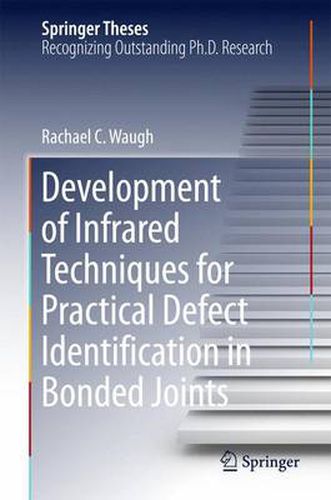Readings Newsletter
Become a Readings Member to make your shopping experience even easier.
Sign in or sign up for free!
You’re not far away from qualifying for FREE standard shipping within Australia
You’ve qualified for FREE standard shipping within Australia
The cart is loading…






Maximizing reader insights into the use of thermography, specifically pulsed and pulse phase thermography (PT and PPT), for the identification of kissing defects in adhesive bonds, this thesis focuses on the application of PT and PPT for the identification of a range of defect types in a variety of materials to establish the effect of material properties on identification of defects.
Featuring analysis of a numerical model developed to simulate the thermal evolution created during a PT or PPT experiment, after validation through a series of case studies, this model is then used as a predictive tool to relate defect detectability to the thermal property contrast between defect and bulk materials.
Demonstrating a means of producing realistic kissing defects in bonded joints where insufficient thermal property contrast exists defects have a limited effect on heat propagation through a component and therefore are not detected using PT or PPT, this thesis discusses the addition of a small load to bonds containing kissing defects which was found to open the defects sufficiently to enable their detection.
A low cost infrared detector, Flir Tau320, is compared to the research based photon detector, Flir SC5000, and is shown to be suitable for application in PT, thus enabling a significantly lower cost tool to be developed.
$9.00 standard shipping within Australia
FREE standard shipping within Australia for orders over $100.00
Express & International shipping calculated at checkout
Maximizing reader insights into the use of thermography, specifically pulsed and pulse phase thermography (PT and PPT), for the identification of kissing defects in adhesive bonds, this thesis focuses on the application of PT and PPT for the identification of a range of defect types in a variety of materials to establish the effect of material properties on identification of defects.
Featuring analysis of a numerical model developed to simulate the thermal evolution created during a PT or PPT experiment, after validation through a series of case studies, this model is then used as a predictive tool to relate defect detectability to the thermal property contrast between defect and bulk materials.
Demonstrating a means of producing realistic kissing defects in bonded joints where insufficient thermal property contrast exists defects have a limited effect on heat propagation through a component and therefore are not detected using PT or PPT, this thesis discusses the addition of a small load to bonds containing kissing defects which was found to open the defects sufficiently to enable their detection.
A low cost infrared detector, Flir Tau320, is compared to the research based photon detector, Flir SC5000, and is shown to be suitable for application in PT, thus enabling a significantly lower cost tool to be developed.